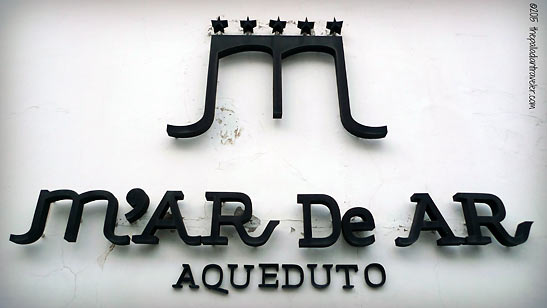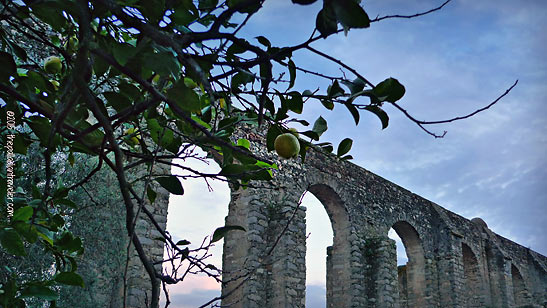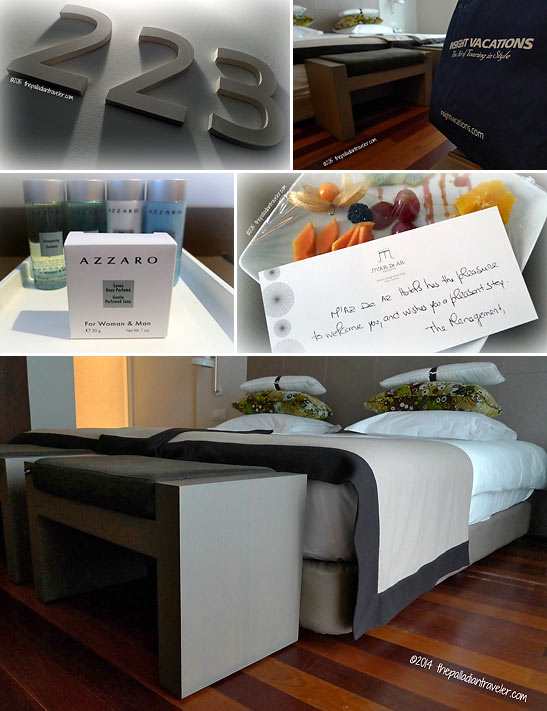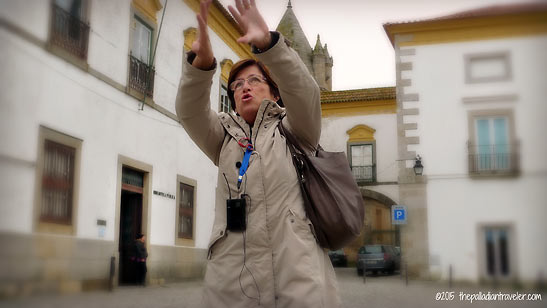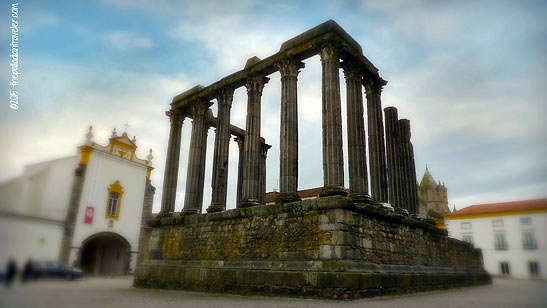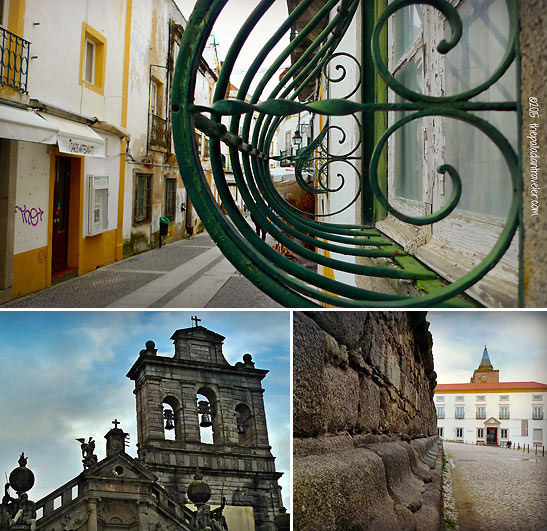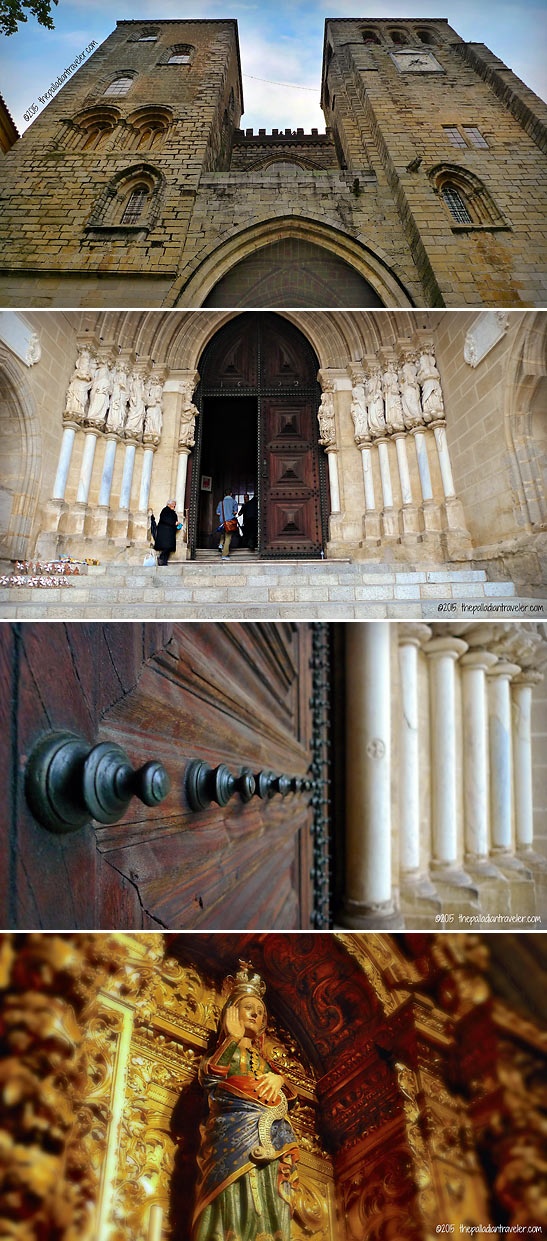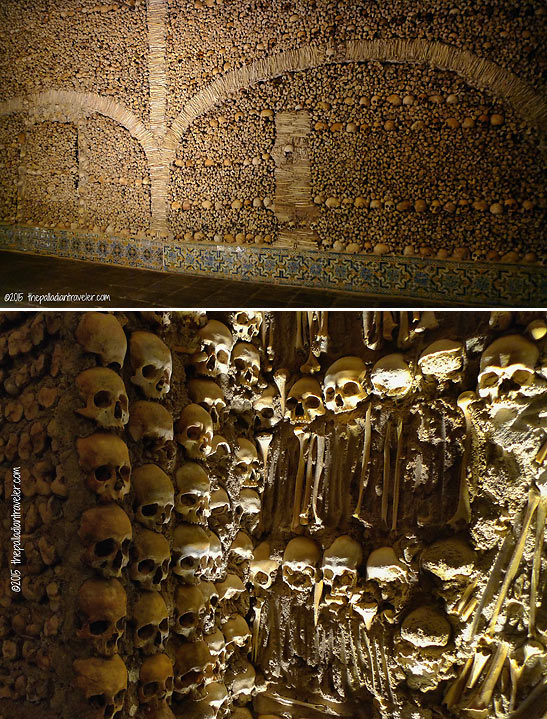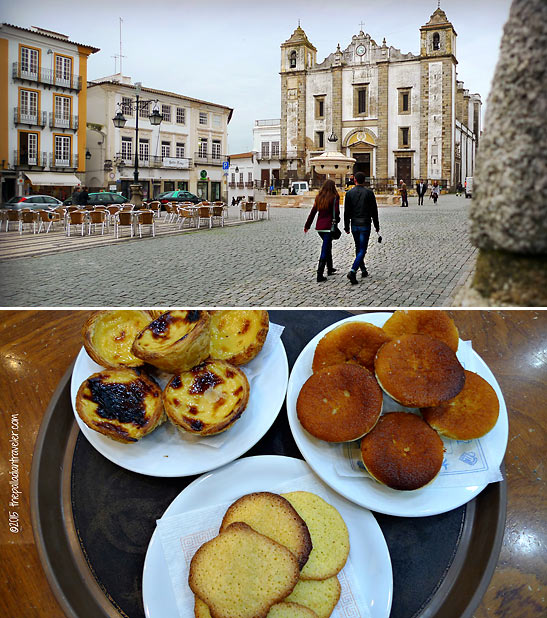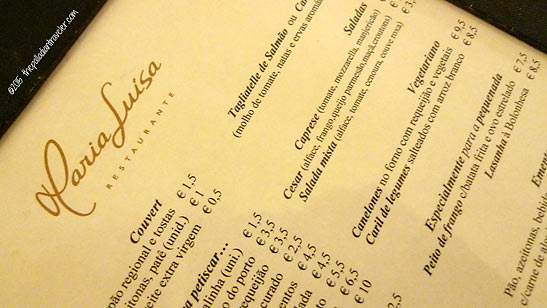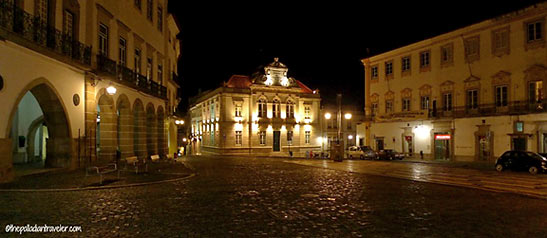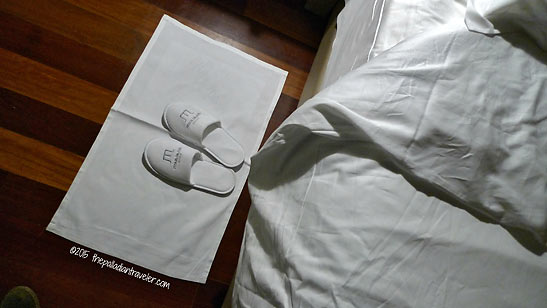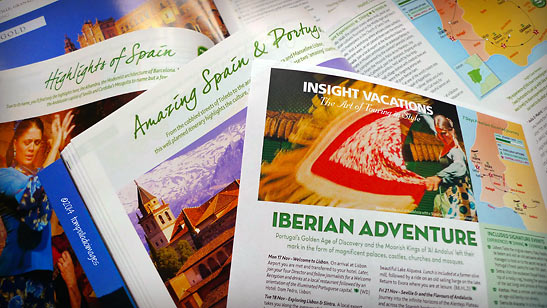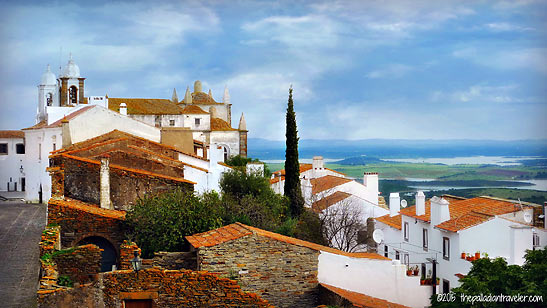 |
 |
|
 |

|
Iberian Adventure:
Enchanting Évora, Portugal's Laid-Back Museum City (Dispatch #9) Story and photos by Tom Weber
This five-star boutique hotel-spa, with 64 suite-rooms, occupies the old Sepulveda Palace, a magnificent structure from the 16th century that's framed by the arches of the Aqueduto da Água de Prata (Aqueduct of Silver Water).
While I drop off my bags inside 223, splash some water on my face and check my camera kit, feel free to have a quick look around before we head straight out to soak up the history of this capital city of the Alentejo and a UNESCO World Heritage site. Satisfied? VAMOS!
Gathered around the Corinthian-columned ruins of the Temple of Diana, a 2 AD Roman structure, we start jotting down notes as Maria José, Insights' animated local art historian, begins her narrative: "Évora's roots date back more than 2,000 years to the days of the Lusitanians, and during Portugal's Golden Age, this museum-city became the residence of the country's royal family."
Maria José adds, "Its unique quality stems from the whitewashed houses and their wrought-iron balconies dating from the 16th to 18th centuries."
An enchanting place to delve into the past, Évora's 14th-century walls protect the labyrinth of narrow travessas that lead to a striking variety of architectural works in Romanesque, Gothic, Manueline, Renaissance and Baroque styles.
Take Sé, the medieval, fortress-like, Gothic cathedral of rose-colored granite, with its ornate main portal of apostolic sculptures and a unique statue of a pregnant Madonna.
There's the atmospheric (read, spooky) Cappella dos Ossos (Chapel of Bones), a dimly lit ossuary inside St. Francis Church where the walls are lined with the skeletal remains of more than 5,000 lost souls.
Or, the town's focal point, Praça do Giraldo (Giraldo Square), once the epicenter of countless bloody and violent events of the Portuguese Inquisition, today it's a tranquil spot lined with restaurants and open-air cafes, like Café Arcada, an Évora institution, where I duck inside to enjoy a few more of those delectable pasteis de nata (egg tarts).
Spectacular architecture and rich history aside, Évora – a member of the Most Ancient European Towns Network – is also known for its superb food, like the mouth-watering regional dishes of the Alentejo served up daily by Patricia and Joao at Maria Luisa, a casual restaurant in the historic center's Praça 1º de Maio (First of May Square).
Gathered around a mesa, the "band of merry media," armed with 25 or so sets of cutlery, flies into action on Insight's euro, savoring an array of mouth-watering dishes and local wines, including my fave: lombo de porco preto (grilled black Iberian pork tenderloin).
My belly now on the verge of exploding, I forgo the courtesy ride on the motor coach and make my way back the old fashioned way, on foot, along the lamp-lit cobble of Rua Cândido dos Reis.
Meanwhile, back at the ranch (M`AR De AR Aqueduto hotel-spa), I'm being turned down – actually suite 223 is – following my triumphant day in Évora, the Museum City.
For complete information on Insight's 112 premium and luxury-escorted journeys around Europe, just click HERE, or call toll free 1-888-680-1241, or contact your travel agent.
Get a good night's sleep, because tomorrow we'll need to be firing on all cylinders when we climb a steep hill to a whitewashed village, hop on board a sailing barge, and put the feedbag back on for more of that to-die-for Alentejo regional cuisine. Bons sonhos (Sweet dreams). Related Articles:
|
|
Feedback for Destination Bosnia: Inside Sarajevo's Tunnel of Hope Spent time in Sarajevo in the fall of 1973…beer was excellent! --- David * * * * Hi Tom, I must say, you're photographs are always amazing. They are top notch. You bring so much class to Traveling Boy. It's photographs like yours that make me want to go out and do my own traveling. Please don't get tired of sending us your amazing adventures. It's such a delight for the soul. --- Raoul, Whittier, CA * * * * Hi Tom: --- David * * * * Hey Tom – Wow! Love those photos – they are so super that they make me A) Want to start eating NOW. B) Go there myself. C) See all that pristine beauty that looks so restful and peaceful. Great story, superb pix!!! Bravo!! --- John, Los Angeles, CA * * * * Feedback for Destination Southwestern France: Saint-Émilion Good job, Tom, and timely info. St. Émilion is in the list of places Jim Hayes and I will visit in September 2014. If we get the chance, we will exploit your experience to enhance the trip! --- Bobby Harper, Dameron, MD * * * * Feedback for Vicenza Walks – Monte Berico I lived in Vicenza for 4 years in the U.S. ARMY from 1963 to 1967. A wonderful place to explore. Palladio’s works are amazing. Have been back twice since and find new places to visit. My favorite is MONTE BERICO where I have some wonderful photos of my family. --- Dr. Albert Pizzi, Hanover, MA * * * * I liked the new TB particularly the Vicenza article that took me back as a youth when we lived in Naples and travelled up there for a baseball tourney (U.S. Military Bases dependent schools played each other.) Took me back to the plaza. --- Bill Feedback for A Canterbury Trail (Sutri) Very interesting note. I have wedroned which route the early pre-Christian and Christian pilgrims travelled to Rome from England. Is it still possible to travel the Francigena trail? --- Pawel You can find out more info on walking tours of Via Francigena at this site: http://www.compagniadeicammini.it/en/. Thanks for stopping by and commenting.. Tom * * * * Good article, enjoyed reading it. Saved your recommended sights for future use. --- Dardenne Prairie, MO * * * * You're going to be great at this Tom. Congrats. --- Donna Vissa -Montreal
|
This site is designed and maintained by WYNK Marketing. Send all technical issues to: support@wynkmarketing.com

|






